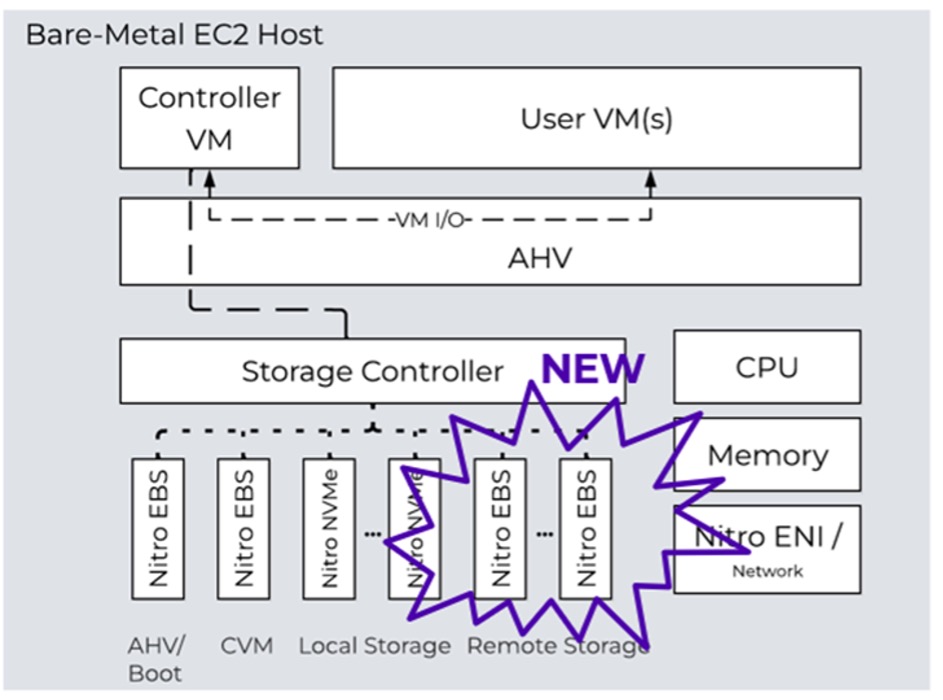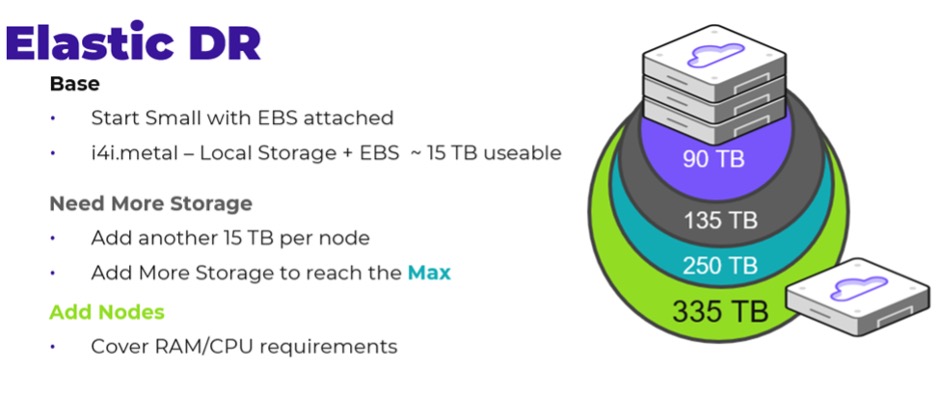Just-in-Time Cloud Storage for Nutanix Cloud Clusters
By Dwayne Lessner
Like the human body, flexibility provides longevity. And in the world of cloud computing, AWS Elastic Block Store (EBS) attached support provides the same flexibility for Nutanix Cloud Cluster™(NC2) customers by providing scalable second-tier storage capability. EBS storage can now be added to NC2 on AWS in the form of EBS volumes that will appear as one storage pool.
This newly-added AWS second-tier storage to NC2 future-proofs customers and improves existing use cases like elastic disaster recovery and lift-and-shift workload portability. You can start with a 3 node cluster and size the total capacity to meet the initial replicated copy of data and additional snapshots needed to meet your data retention needs. Prior to the EBS support you might have added additional bare-metal nodes to meet your storage requirements. Now you can keep the base NC2 cluster as small as possible, saving on bare-metal and licensing costs.

With EBS attached support for NC2, the data tiering process is the same as a hybrid configuration from on-premises. The EBS storage forms the cloud-SSD tier and uses the same rules as described in the Nutanix Bible - Stargate IO Logic to move the data off the NC2 baremetal onto the remote attached EBS volume. EBS volumes are listed in Nutanix Prism Element with the appropriate tier label.
EBS volumes are added to a cluster in a uniform manner. The total amount of storage follows the same on-premises Nutanix AOS limitations and maximum storage amount that can be added.
An additional constraint, the total local storage that comes from the locally attached NVME has to make up at least 20% of the overall storage. As an example, the i4i.metal instance has 30 TB of local AWS Nitro NVMe-based storage and the remaining 80% can be used to reach the current AOS node limit when using snapshots.
Adding EBS volumes to a NC2 cluster can be done at the time of cluster creation, The entire process is managed from the NC2 portal so the management overhead is almost non-existent.
The NC2 portal gives you the flexibility to start with a small amount of EBS storage and grow this on-demand at a later time. A good example of this is with disaster recovery use cases where you could deploy a 3-node NC2 cluster with a small amount of EBS storage to cover the storage usage from replicating the data for Tier-1 workloads that need fast recovery.
If your needs change, simply scale up the EBS storage at a later time. If a disaster recovery failover occurs and the cluster size is insufficient due to RAM usage requirements, additional NC2 nodes are quickly and easily added to increase capacity. This can be orchestrated using Playbooks in Prism Central or through the NC2 portal.

EBS attached support for NC2 is another great capability that enables you to simplify the move of applications and data to the public cloud while reducing administrative overhead and managing spiraling cloud costs by reducing the total number of nodes that you need to run. NC2 is the easiest way to operate and adapt to ongoing digital transformation and the public cloud.
©2024 Nutanix, Inc. All rights reserved. Nutanix, the Nutanix logo and all Nutanix product and service names mentioned herein are registered trademarks or trademarks of Nutanix, Inc. in the United States and other countries. All other brand names mentioned herein are for identification purposes only and may be the trademarks of their respective holder(s). Certain information contained in this presentation may relate to, or be based on, studies, publications, surveys and other data obtained from third-party sources and our own internal estimates and research. While we believe these third-party studies, publications, surveys and other data are reliable as of the date of this paper, they have not independently verified unless specifically stated, and we make no representation as to the adequacy, fairness, accuracy, or completeness of any information obtained from third-party sources.